Water Environment Solutions Based on Advanced Technology and Comprehensive Capabilities
The requirements to improve the quality of treated water while using less energy, and to minimize the release of environmental pollutants from sewerage systems into public watercourses are common issue of sewerage systems. Hitachi is actively working on developing and supplying solutions including the development of supervisory and control technologies for advanced sewage treatment practices, for which there is a growing demand in Japan and other developed economies, and for dealing with urban flooding and releases of untreated sewage when it rains.
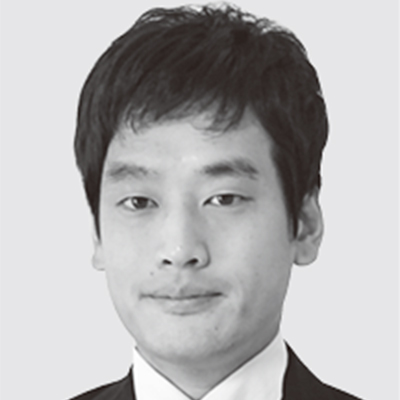
Process Engineering Research Department, Center for Technology Innovation – Materials, Research & Development Group, Hitachi, Ltd. Current work and research: Research and development of supervisory and control systems and information systems for sewerage. Society memberships: The Society of Environmental Instrumentation Control and Automation (EICA).
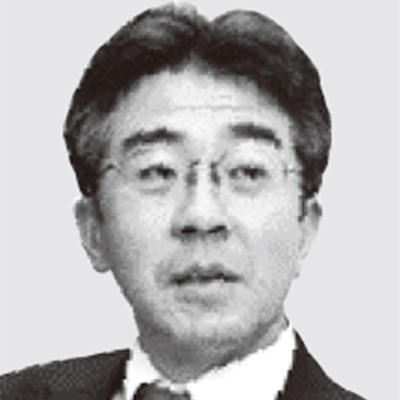
Process Engineering Research Department, Center for Technology Innovation – Materials, Research & Development Group, Hitachi, Ltd. Current work and research: Research and development of supervisory and control systems and information systems for water supply, sewerage, and water environment. Society memberships: EICA, the Institute of Electrical Engineers of Japan (IEEJ), and the Japan Society on Water Environment (JSWE).
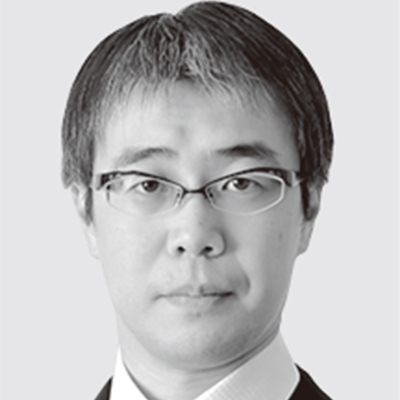
Hitachi Insight Group, Control System Platform Development, Public Control Systems Engineering Department, Hitachi, Ltd. Current work and research: Development of supervisory and control systems and information systems for water supply and sewerage.
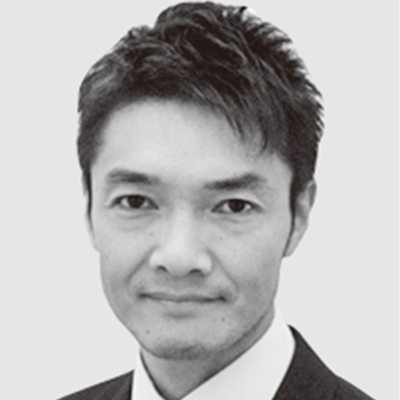
Water Solutions Division, Water Business Unit, Hitachi, Ltd. Current work and research: Business promotion of water supply and sewerage systems. Society memberships: EICA.
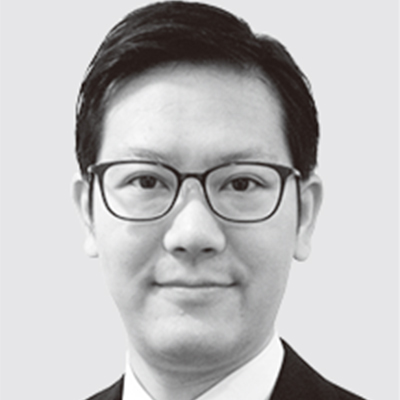
Water Solutions Division, Water Business Unit, Hitachi, Ltd. Current work and research: Planning of research and development on water supply and sewerage systems. Certifications: P.E.Jp (Professional Engineer, Japan) of Water Supply & Sewerage.
When it comes to things like keeping the quality of treated water at a high level and the reliability of its operations, the sewerage systems in Japan operate to the highest standards in the world. Meanwhile, the government agencies and utilities involved in the sewerage industry are seeking to maintain standards by pursuing forward-looking measures in response to the changing circumstances in which they operate, which include future growth in demand for infrastructure replacements, higher expectations from the public, and falling numbers of young technical staff.
In response to this trend, Hitachi is focusing on the development of technologies and systems appropriate to the new needs of the water environment, including sewerage systems, and is working on providing solutions with a view to making a contribution not only to domestic users, but also to overseas users.
This article focuses on work on supervisory and control technologies that help reduce the environmental load in sewerage systems.
Sewerage systems are one area where Hitachi has for a long time put a lot of effort into technology development. With the aim of providing broad solutions that cover four aspects of sewerage systems, namely, treatment processes, supervision and control, maintenance and inspection, and recycling, Hitachi is developing simulation technologies for evaluating and predicting the behavior of the associated processes, and supervisory and control technologies that make use of these simulations (see Table 1). In order to achieve more sophisticated supervision and control of sewage treatment processes, Hitachi has used simulations that include in-depth analysis of the physical chemistry and biology of water treatment, and technologies for appropriately directing the flow of water throughout a watershed. These have been incorporated into products both directly and indirectly.
Some requirements are ever-present, and these include the need to improve the quality of treated water while using less energy, and to minimize the release of environmental pollutants from sewerage systems into public watercourses. These requirements continue to apply in the present day and are a particular focus of development.
Recent activities include the development of supervisory and control technologies for advanced sewage treatment systems, for which there is a growing demand in Japan and other developed economies, and for dealing with urban flooding and releases of untreated sewage when it rains. One example is the aggressive pursuit of initiatives aimed at seeing these technologies adopted more widely in Japan through a national project of the Ministry of Land, Infrastructure, Transport and Tourism. The following sections describe a demonstration of supervisory and control technologies being undertaken by Hitachi as part of a national project, and new development initiatives that have used a framework for joint research with a university.
Table 1—Hitachi’s Solution for Sewerage Systems (Including Solutions under Development or Testing) Hitachi supplies a wide range of solutions for sewerage systems to create value and reduce the environmental load in sewerage systems.
Hitachi supplies a wide range of solutions for sewerage systems to create value and reduce the environmental load in sewerage systems.
To maintain a good water environment, the sewerage industry is making progress on the introduction of advanced sewage treatment systems that remove nitrogen and phosphorus nutrients as well as organic material from sewage. Meanwhile, there is also a need to reduce the emission of greenhouse gases during sewage treatment to help prevent global warming. In response, Hitachi has developed an energy-efficient control technology that utilizes information and communication technology (ICT) to maintain reliable water quality while reducing power consumption (see Figure 1).
The aims for the new control system are to consistently achieve water quality targets for nitrification (the removal of ammonia from sewage), cut power consumption by reducing air blower flow rate, and reduce the amount of maintenance work associated with operational control. To achieve these objectives, the new control system features a novel airflow control function that uses two ammonia sensors, a function for visualizing treatment characteristics, and a function for automatically updating the airflow calculation model. A major feature of the airflow control function is its ability to avoid excessive or insufficient treatment, using feedforward control and conventional feedback control to respond quickly to changing inflows. The feedforward control uses a newly developed model of microbial behavior (treatment characteristics) expressed in terms of the airflow required to achieve a given reduction in ammonia concentration. As this treatment characteristics model is progressively adapted using process data, it can also help with the early detection of abnormal conditions and with the accuracy of the required airflow calculation.
Figure 1—Overview of Energy-efficient Control Technology that Utilizes Information and Communication Technolog The technology combines information processing technology with supervision and control using two ammonia sensors to reduce maintenance workloads while also achieving reliable water quality and lower power consumption.
The technology combines information processing technology with supervision and control using two ammonia sensors to reduce maintenance workloads while also achieving reliable water quality and lower power consumption.
Figure 2—Example Operation Using New Control System Developed for B-DASH Project The treatment train using the new control system had a lower aeration airflow than that using the conventional control technology, while also successfully keeping the concentration of ammonia in the treated water at or below the target despite fluctuating inflows.
The treatment train using the new control system had a lower aeration airflow than that using the conventional control technology, while also successfully keeping the concentration of ammonia in the treated water at or below the target despite fluctuating inflows.
The new control system was verified in work entitled “Demonstration of Efficient Nitrification Control with ICT” that was undertaken through the Breakthrough by Dynamic Approach in Sewage High Technology (B-DASH) Project of Japan's Ministry of Land, Infrastructure, Transport and Tourism. The project ran from FY2014 to FY2015 and was contracted to the National Institute for Land and Infrastructure Management (NILIM). The demonstration took place on two treatment trains at the Kasumigaura Wastewater Treatment Plant in Ibaraki Prefecture using a recycled nitrification/denitrification process with coagulant addition. The new control system was used on one of the trains while the other continued to use the conventional constant-dissolved-oxygen (DO) control (with DO of 2.0 mg/L at the downstream end of the aerobic tank).
Figure 2 shows some of the results from experiments conducted in FY2015. The train with the new control system had lower aeration airflow than the other train while still achieving the control targets for the treated water. Operation over the duration of the demonstration study (98 days in total) achieved a mean concentration of 0.33 mg-N/L in the treated water (against a target of 1.0 mg-N/L or less) and a reduction in aeration airflow of 16.9% (against a target of 10%). An evaluation by the B-DASH Project calculated that, under the assumed conditions (use of constant-DO control to treat 50,000 m3/day of sewage using the standard activated bioreactor), this reduction in airflow reduced power consumption by 13.2%, representing an annual saving of 7.39 million yen. These results were approved by the B-DASH Project assessment committee, and the demonstration study concluded in March 2016.
Based on the results of the B-DASH Project, guidelines for introducing the technology in sewerage works were published by NILIM in December 2016(1). The draft guidelines start with an overview of the new control technology and summarize how it is to be evaluated, from introduction through to planning, design, and maintenance.
The overview describes the treatment plant conditions and timings for effective introduction of the technology. In the case of treatment plants where too much air is supplied due to large variations in influent loading, for example, installation and running costs can be reduced while still achieving more reliable water quality and lower power consumption by adopting the new control technology when replacing the supervisory and control system or blowers. In the future, Hitachi intends to work toward reducing the environmental load in advanced sewage treatment, using these draft guidelines to promote the wider adoption of the new control system.
Combined sewers that carry both stormwater and sewage have been built, particularly in large cities, as a quick way to deal with flooding and make improvements in urban living conditions. The problem with combined sewers, however, is that they can result in the discharge of insufficiently treated effluent into rivers or other watercourses when a rapid rise in inflows triggered by a sudden storm or other rain event overwhelms the capacity of pumping stations and treatment plants. Water pollution by this combined sewer overflow have become a problem in recent years, with the Ministry of Land, Infrastructure, Transport and Tourism playing a central role in the steps being taken to deal with these rain-triggered overflows.
The main measures adopted to date have been hardware-based, including stormwater storage pipes and equipment for dealing with overflows (screens or high-speed coagulation sedimentation ponds). In response, Hitachi is currently developing operational countermeasures for use at sewage pumping stations and treatment plants that enhance the operation of existing equipment to reduce the impact of discharges.
The operation of pumping stations for combined sewers must deal with the various risks associated with the increased inflows that occur when it rains and make decisions based on these constantly changing inflows. While the first operational priority is the rapid draining of rainwater that falls within its coverage area to prevent flooding, depending on how much rain falls, pumping stations must also operate in a way that takes account of risks such as inundation of the station itself or an increase in environmental contamination due to untreated sewage simply being discharged.
Hitachi is currently developing a dynamic simulator for sewage pumping stations that will enable them to operate in ways that take account of these various risks. The simulator is made up of individual models of the pumping station equipment and other infrastructure that are based on their detailed specifications. The simulator can provide useful assistance for determining operations like pump discharge rates and when to start or stop the pumps in cases when a rainfall event demands quick decision-making. It does this by using the predicted inflow to the pumping station as input and having the simulator make a quantitative assessment of the risks associated with performing pump control based on different control practices (predicted inflow basis control, control of collected sewer volumes, and adjusting control based on the volume of wastewater able to be fully treated). These risks include flooding in the area the system is meant to drain, inundation of the pumping station, greater discharge of effluent, and higher energy consumption (see Figure 3).
The aim is to implement an integrated system for the supervision and control of sewage treatment plants and pumping stations by coordinating the amounts of stormwater able to be handled by a number of different pumping stations, and through interoperation with the technology described below for controlling sewage treatment when it rains.
Figure 3—Overview of Sewage Pumping Station Control The system uses a dynamic simulator that replicates in detail the behavior of the pump wells, stormwater pumps, and other pumping station equipment to estimate the risks and control the pumps accordingly.
The system uses a dynamic simulator that replicates in detail the behavior of the pump wells, stormwater pumps, and other pumping station equipment to estimate the risks and control the pumps accordingly.
Figure 4—Overview of Technologies for Controlling Wet Weather Sewage Treatment The objective is to maximize the amount of contaminants removed and prevent the overflow of sludge by using a model of microbial treatment to calculate appropriate flow rates.
The objective is to maximize the amount of contaminants removed and prevent the overflow of sludge by using a model of microbial treatment to calculate appropriate flow rates.
The result when rain causes the inflows to a sewage treatment plant to exceed its designed capacity may be that the excess is discharged without being fully treated (by microbial treatment). The challenge in this case is how to reduce the amount of contaminant discharged into public watercourses. One example of the measures used to reduce effluent discharges is step feeding of the excess volume of sewage to the latter stages of an activated sludge tank so it can undergo biological treatment(2).
Hitachi is developing a technology for controlling wet weather treatment that controls the inflow of sewage to the microbe reaction tank to limit the overflow of sludge from the final settling tank and maximize the volume of contaminants removed at the activated sludge tank (see Figure 4). A feature of the technology is that it uses a quantitative model as the basis for specifying the sewage inflow, a new formula having been determined for the amount of pathogenic microorganisms and other organic material able to be absorbed by the activated sludge in the microbe reaction tank.
In the future, Hitachi intends to make further enhancements and conduct testing of the technology with the aim of using efficient control of sewage treatment when it rains to help reduce the amounts of contaminants discharged.
Although the circumstances surrounding the sewerage infrastructure continue to change over time, it remains as important as ever. Hitachi is continuing to develop supervisory and control technologies and systems that meet the need for reliable, trusted, and more efficient sewerage services. In the future, Hitachi intends to focus on further technical developments so as to raise its contribution to urban water flows through supervisory and control technology.
The authors would like to acknowledge that the investigation into the control of sewage treatment when it rains was conducted as part of joint research with the Hiroaki Tanaka Laboratory at the Graduate School of Engineering of Kyoto University, and express their thanks.